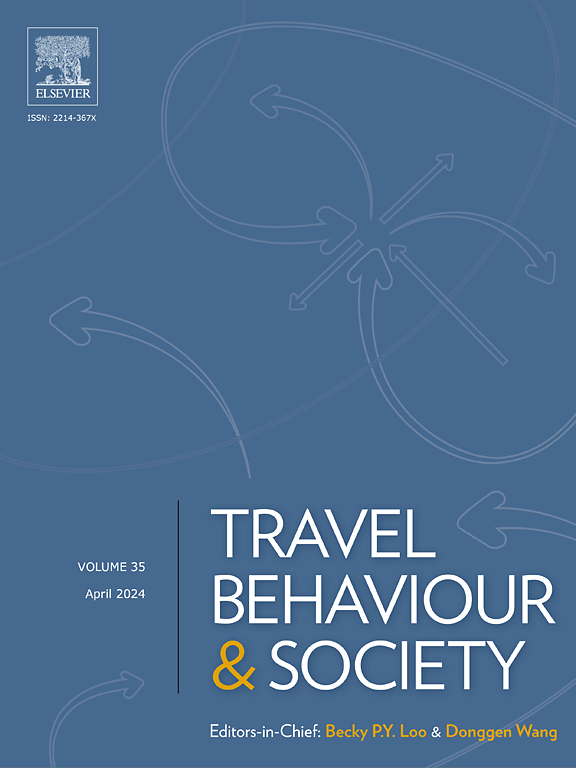Predicting urban mobility patterns with a LightGBM-enhanced gravity model: Insights from the Wuhan metropolitan area
IF 5.1
2区 工程技术
Q1 TRANSPORTATION
引用次数: 0
Abstract
Accurately quantifying urban human mobility is crucial for tackling challenges in traffic engineering, urban planning and public health. Traditional static gravity models (GModel) often fail to address spatial heterogeneity and non-linear relationships in mobility flows, particularly in complex urban regions with new towns and metropolitan areas. This study investigates mobility flows in the Wuhan Metropolitan Area by introducing an Intelligent Gravity Model (IGModel) that integrates the theoretical insights of gravity models with the non-linear predictive capacity of LightGBM. The IGModel extends the gravity model by incorporating built environment and geometric variables while leveraging machine learning to enhance flow predictions. Through this hybrid approach, the IGModel achieves robust predictive performance (R-squared = 0.97) and provides interpretable insights using SHAP (Shapley Additive Explanations) analysis. The results demonstrate the complementary strengths of mechanism-driven and data-driven approaches, with the IGModel outperforming dynamic gravity models (DGModel) and offering actionable insights for urban planning and transportation management.
基于lightgbm增强引力模型的城市交通模式预测:来自武汉都市圈的启示
准确量化城市人口流动对于解决交通工程、城市规划和公共卫生方面的挑战至关重要。传统的静态重力模型(GModel)往往无法解决流动性流动的空间异质性和非线性关系,特别是在具有新城和大都市区的复杂城市区域。本研究通过引入智能重力模型(IGModel),将重力模型的理论见解与LightGBM的非线性预测能力相结合,对武汉都市圈的交通流动进行了研究。IGModel通过结合建筑环境和几何变量来扩展重力模型,同时利用机器学习来增强流量预测。通过这种混合方法,IGModel实现了稳健的预测性能(r²= 0.97),并使用Shapley加性解释(Shapley Additive explanation)分析提供了可解释的见解。研究结果表明,机制驱动和数据驱动方法具有互补优势,其中IGModel优于动态重力模型(DGModel),并为城市规划和交通管理提供了可操作的见解。
本文章由计算机程序翻译,如有差异,请以英文原文为准。
求助全文
约1分钟内获得全文
求助全文
来源期刊

Travel Behaviour and Society
TRANSPORTATION-
CiteScore
9.80
自引率
7.70%
发文量
109
期刊介绍:
Travel Behaviour and Society is an interdisciplinary journal publishing high-quality original papers which report leading edge research in theories, methodologies and applications concerning transportation issues and challenges which involve the social and spatial dimensions. In particular, it provides a discussion forum for major research in travel behaviour, transportation infrastructure, transportation and environmental issues, mobility and social sustainability, transportation geographic information systems (TGIS), transportation and quality of life, transportation data collection and analysis, etc.
 求助内容:
求助内容: 应助结果提醒方式:
应助结果提醒方式:


